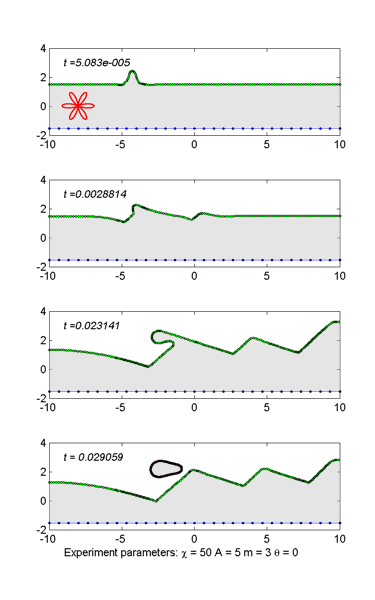 |
ELECTROMIGRATION INDUCED HILLOCK DYNAMICS ON THE INTERCONNECT SURFACE Six Fold Crystal Symmetry, {111} Planes in FCC The orientation or tilt angle zero with respect to the wind direction results almost
similar and sawtooth shape oscillations formations after edge-hillocks convert
themselves into the kink-shapes. This evolution kinetics is very speedy at very high
electron winds χ≥50 such as that immediately formation of the daughter kink
shape perturbation takes place on the windward side of the hillock while it was
converted in form. The latter stage, the lee side of the converted hillock protrudes
and finally hangs over itself creating a bottle neck. The large peace of material
ruptures from this bottle neck, leaves the interconnect line, and drifts towards the
anode end. In order to simulate this event, which is illustrated in Figure, the
underlayer is assumed to be acting as a shunt for the applied electrostatic field.
Therefore, the broken away peace is still subjected to the applied electron wind.
After this rupture, the remaining part of the hillock becomes sawtooth in shape and
continuous to drift to the cathode end. Meanwhile more and more subsidiary waves
are generated on the windward side. The complete package, made up by sawtooth
waves, drags towards the cathode end by constantly increasing the number of their
members at the front (multiplication). However, this process breaks down when the
lower edge of the preceding wave, which is nothing but the original hillock with
different face, touches the opposite edge of the interconnect line. At low electron
wind, the hillock transform into step like wave front, and proceeds drifting towards
the cathode. |